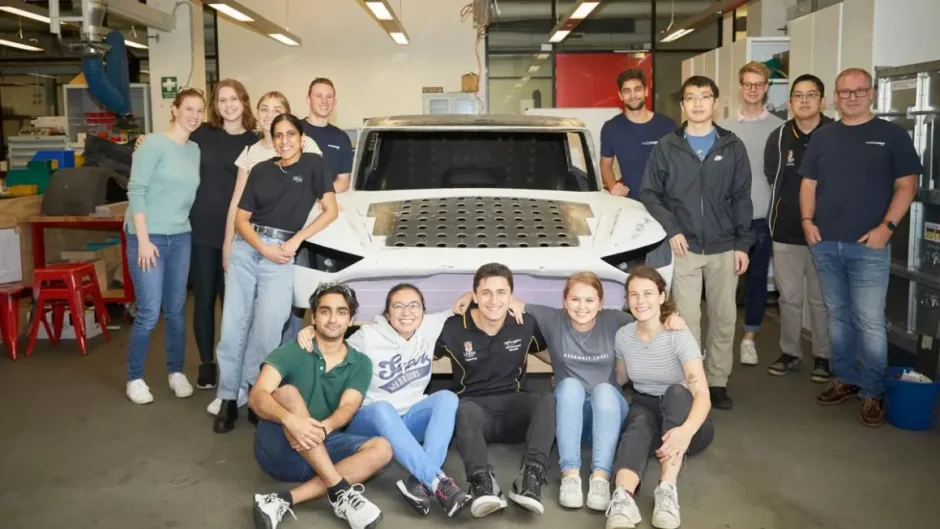The former Red Bull Formula One operation manager, now a Professor of Practice at UNSW, Professor Hopkins, wants to explore the possibilities for fast electric vehicles and solar-powered cars the kinds you take for a spin on a Saturday just for the sake of it.
“We want to be able to prove that electric cars can be fun, not just efficient, not just good for the environment,”
As team principal of the University of NSW’s Sunswift Racing – an engineering faculty project consisting of 80 students who design, build and race solar electric vehicles he believes his students are on the path to achieving it. Today, at the Australian Automotive Research Centre in Victoria’s west, a student-built million-dollar solar-powered EV will attempt to set the Guinness World Record for the fastest solar electric vehicle over 1,000 kilometers.
Five drivers, all UNSW students from the Sunswift project, are aiming to complete 239 laps of the track, which is 200 kilometers per driver, in about 10 hours.
Professor Hopkins said a few of the drivers may still be on their P plates, “but this is motorsport, you can drive racing cars without even having to have a driver’s license”.The official honor – and Guinness World Record certificate – will be conferred once timing information and car telemetry data have been analyzed and confirmed by a team of experts.
Sunswift team manager Andrea Holden, a UNSW mechanical engineering student, said it “feels weird” to help make something regarded as the world’s best.“Two years ago, when we started to build this car, everything was going into lockdown and there were a lot of difficult moments,” Holden said. “It was a lot of work and a lot of hours and a lot of stress, but it’s all been worth it.”
A hybrid of sorts, the Sunswift 7 car contains a standard electric car battery, but can also be powered by energy from the sun.”We can divert that energy straight into the electric motors, so at any one time we can have the car being powered by energy from the battery and also energy from the sun whilst the car is moving,” Professor Hopkins said.
“Whilst the car is stationary, we can be charging the battery that’s onboard the car by power from the sun”.The car battery can also be charged the traditional way by plugging it into a charging station, he said.
By combining an electric battery with solar power, Professor Hopkins said the UNSW Sunswift team wanted to show Australians what was possible.”We believe that solar-powered electric vehicles are just these things with batteries in and that’s largely true, but there are other ways of producing electricity solar being one, and probably hydrogen fuel cells being the other,” Mr. Hopkins said.
The advantage of a solar hybrid, according to Mr. Hopkins, is that in the future it could provide other options aside from the traditional lithium iron energy battery. While the production of commercial solar electric cars is in its infancy only one company has so far commercialized this technology Professor Hopkins believed that could change.
“It’s way off from being the sole solution. We just don’t have cells efficient enough to power cars or trucks solely by photovoltaic energy, but certainly, they can be part of the solution,” he said.“Let’s remember, these are not the best-paid professional car makers in Stuttgart working for Mercedes. This is a bunch of very smart amateurs who have taken all the ingredients and put them together in a brilliant way.
“But these young men and women are the future and they have already demonstrated here with Sunswift what they are capable of imagine what they will do when we let them loose on the wider world”.
Sunswift 7 completed 240 laps of AARC’s Highway Circuit, equivalent to more than the driving distance from Sydney to Melbourne, to break the record. The car stopped only to allow for a change of driver every few hours plus one tire change due to a puncture and the nerve-wracking battery management repair.
Sunswift 7 isn’t a production solar-powered cars of the future due to its cost and lack of comfort but more importantly demonstrates that if the world wants to make cars more efficient, more sustainable, and more environmentally friendly, then it is possible.
Read More:












